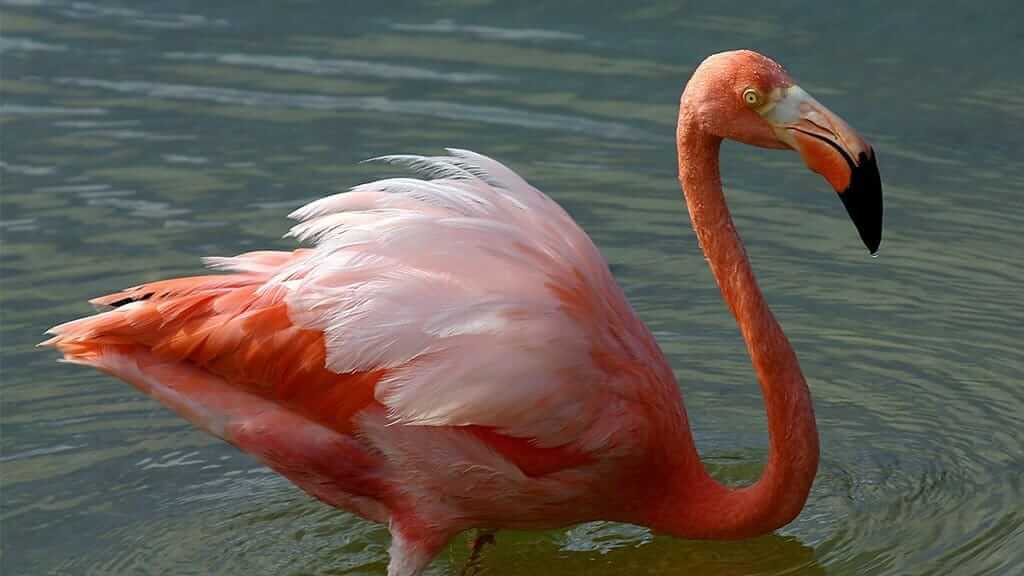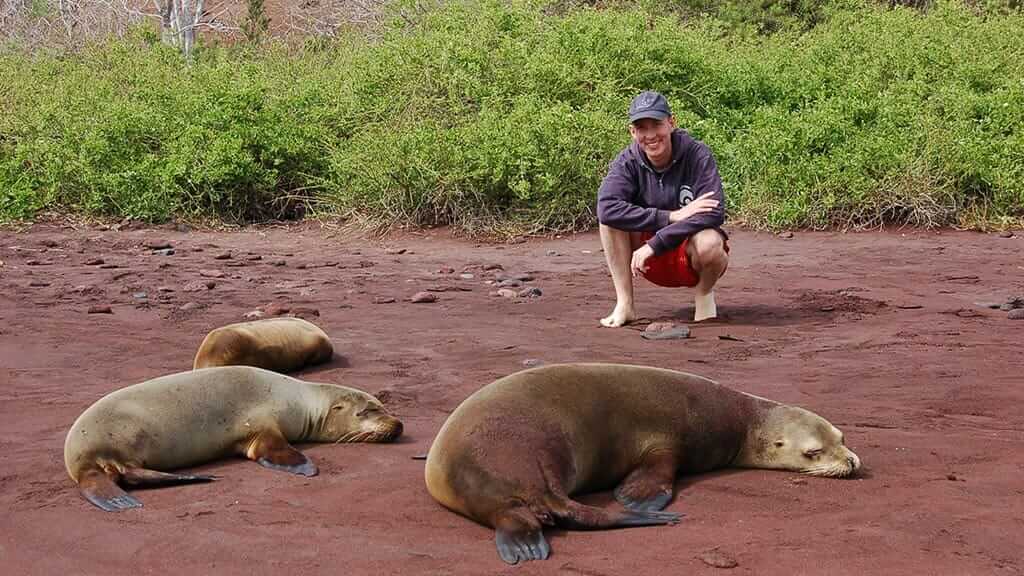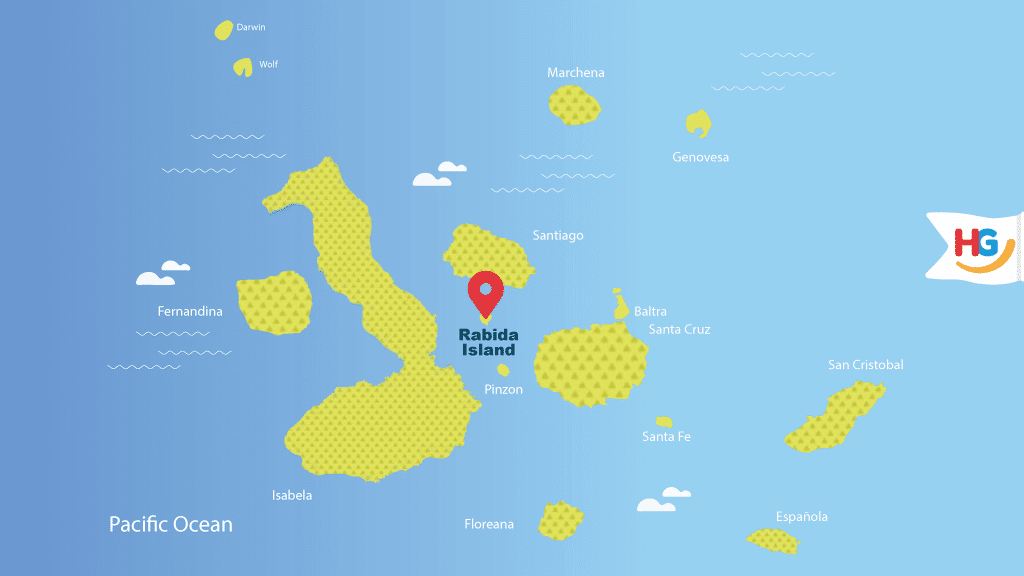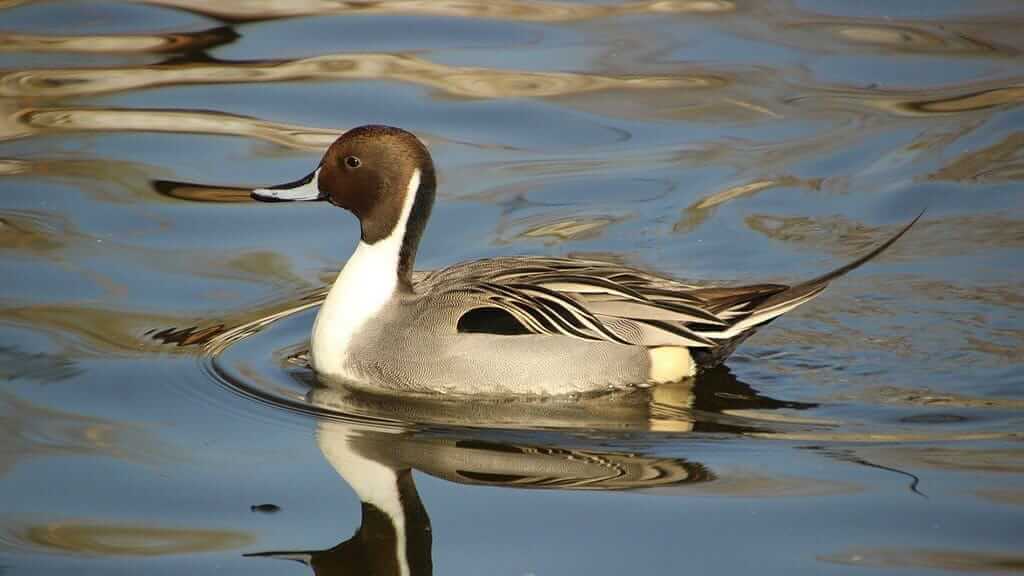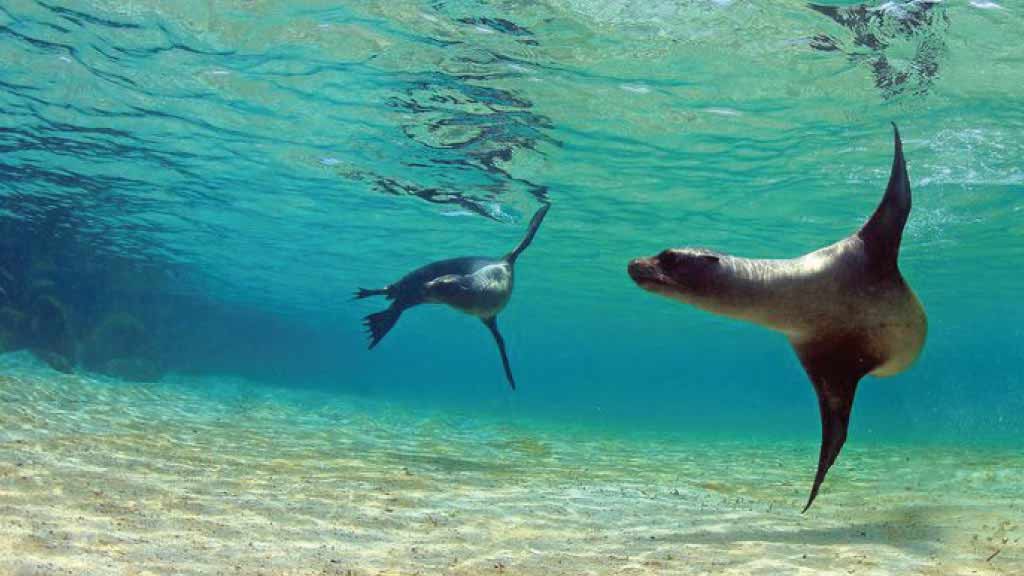Rabida Island Galapagos (Isla Rabida)
At Galapagos, Rabida is known as the Red Island, and it’s not difficult to see why. The very first thing that most visitors will see at Rabida Island is the deep red-colored beach and cliffs. It's almost like a visit to the planet Mars. This makes Rabida Island one of the most photogenic landscape sites in the Galapagos, especially when illuminated at sunrise or sunset. Rabida Island has only one Galapagos visitor site, but what it lacks in size it makes up for in variety. There is always a warm welcome from the resident Rabida Island sea lion colony. Avid birdwatchers can enjoy a great diversity of marine and land bird species. To top it all off, Rabida Island also has fabulous underwater action for snorkelers.
Keep reading for everything you need to know to plan your visit to Galapagos's Rabida Island. What wildlife to spot here? Which activities and visitor sites await? Also, learn why Rabida Island has that unmistakable red hue.
Rabida Island Galapagos Wildlife Highlights:
• Rabida Island has a resident colony of several hundred Galapagos sea lions. These friendly fellas love to snooze on the red sand beach, and swim with visiting tourists.
• Galapagos Flamingos can often be spotted feeding on shrimp in the brackish pool just behind the Rabida beach.
• The Palo Santo and cacti forests on Rabida are home to 9 different species of Darwin’s finches. See if you can identify them all by their different beak shapes and sizes.
• Rabida Island is one of the best places in the Galapagos to see pelicans nesting up close.
• Rabida's snorkeling highlights include green sea turtles, eagle rays, eels, reef sharks, and sometimes even Galapagos penguins.
• Marine iguanas and lava lizards can be found shading themselves among the red rocks of Rabida Island beach.
• Rabida Island is also a top spot for Galapagos bird watching. On land, keep your eyes peeled for Yellow warblers, Galapagos doves, Brown pelicans, Galapagos hawks, and Mockingbirds. Waders like pintail ducks and common stilts are common at the lagoon. Meanwhile, Galapagos Sea bird species including blue-footed boobies and Nazca boobies nest up on cliff ledges.
About Rabida Island
English Name: Jervis
Ecuadorian Name: Rabida
Total Area: 1.89 sq miles
Rabida Island Population: zero (uninhabited)
Rabida Island is an amazing place for landscape photography. The bizarre red sand beach creates spectacularly unusual images. Good light brings Rabida Island scenery to life. Try to catch the scene during the golden hour in the early morning or late afternoon, just after sunrise or before sunset. At this time of day, the red sand often glows bright orange. The bright greens of the opuntia cacti and palo santo trees illuminate. The waters also take on a crystalline turquoise hue. The very best Rabida Island landscape view is at the end of the cliff lookout trail.
Rabida Island's Geology
What is it that makes Rabida Island so red? The volcanic eruptions that originally formed Rabida came from volcanic scoria cones. The lava that poured out was especially rich in iron and magnesium. When exposed to air the iron minerals oxidize (rust), creating their rich red coloring. Over time the lava rocks and cliffs have eroded into the stunning red sand that we see today.
Rabida Island Habitat:
Rabida Island has a very rocky coastline. The habitat is largely arid and dry. A brackish pool has formed behind the beach, where rainwater and seawater have mixed together. This habitat is perfect for flamingos and wader birds. The red cliffs also make handy perches for fishing sea birds.
Rabida Island History:
Rabida’s original name (Jervis) is in honor of John Jervis, an Admiral of the British Royal Navy fleet back in the 18th century. It was later renamed Rabida Island after the name of the convent where Christopher Columbus left his son during his voyage to the Americas.
Conservation On Rabida Island:
Rabida is a good example of the ongoing fight against introduced invasive species on the Galapagos Islands.
On two occasions goats have been introduced by humans to Rabida island, in 1971 and 1975. Goats are a disaster for a small island ecosystem. They eat literally anything they see, destroying vegetation, habitat, and food sources of native species. Their hooves also stomp unwittingly on iguana eggs. On each occasion, the Galapagos National Park Authority was forced to eradicate the goats.
Rabida Island has also suffered rodent problems. Norway rats and possibly black rats arrived at some point over the past half-century. Rats prey on iguana eggs, small reptiles, and the smaller native rice rat species. In 2011 the Rabida Galapagos rat eradication project was successful. It is hoped that native flora and fauna on Rabida Island will once again be able to thrive.
Where is Rabida Galapagos?
How to get to Rabida Island?
Unfortunately, there are no day tours from Santa Cruz to Rabida Island. The only way to visit Rabida is therefore aboard a Galapagos Cruise Itinerary. Not all cruises visit the northern islands, so be sure to check carefully when planning your trip.
Contact us for a FREE TOUR QUOTE, or for more information to plan your Galapagos vacation to visit Rabida Island.
Rabida Island Galapagos Visitor Site
Landing Type: Wet beach landing.
Trail Length: 1 and ½ hour trek.
Terrain: An easy trek along the beach, inland, and up to the cliffs. Take care on uneven and rocky volcanic terrain.
Rabida Island is small and has just one visitor site.
A wet landing drops visitors straight onto Rabida's red sand beach, where lazy Galapagos sea lions love to sunbathe. Sea lion photos against the red sand backdrop are unique at the Galapagos, so don’t be shy with your camera here. Also, take a moment to look around at the millennia-old red cliffs and lava flows.
Behind the beach, there is a brackish lagoon where flamingos often feed. These beautiful birds eat with their head upside down, scooping in mouthfuls of salty water to filter out tasty crustaceans. It is this diet that gives them their distinctive pink coloring, owing to carotenoid pigment. Flamingos are not the only visitors to this lagoon, look out for other waders too. Pretty Pintail Ducks and Stilts are also quite common here.
Rabida Island also has a short visitor trail leading up to the cliffs. The path leads through a forest of Palo Santo trees and endemic Opuntia cactus (prickly pear). This is an ideal habitat for land birds.
Incredibly, 9 of the 13 species of Darwin’s Galapagos Finch can be found on Rabida Island. Each species can be differentiated by beak shape and size, but this is no easy task. Don’t worry, your naturalist guide will be able to help you make correct identifications. Other land birds to look out for include Galapagos Hawks, Yellow warblers, and large-billed flycatchers. On occasion, you might also spot a Galapagos snake along the trail, but don't worry as they are harmless to humans.
At the top of the trail, you'll reach the clifftops. This is the perfect spot to appreciate Rabida Island in all its glory. Get clicking those fantastic panoramic landscape shots! Look out for Booby birds (blue-footed and Nazca) up here, they'll often perch on the cliff ledge to take a breather from fishing.
That brings an end to your Rabida land visit, but the fun isn’t over yet. Rabida is also an enjoyable snorkeling site. Marine wildlife sightings vary, but reef sharks, sea lions, and colorful Galapagos fish are the most common.
Your Galapagos naturalist guide may also offer to take you around the Rabida Island shoreline in the panga (zodiac boat). This provides a good opportunity to see Galapagos fur seals, pelicans nesting in the salty scrub, and boobies up on the cliffs.
Note: All wildlife sightings are by their very nature unpredictable.
In conclusion, Rabida Island is unique even by Galapagos standards. The Galapagos islands are home to an array of fabulous beaches, but few are as unusual or spectacular as Rabida’s red beach. Activities on Rabida Island offer a little of something for everyone, from gentle trekking to top snorkeling action, panoramic views, and beach time. Rabida Island’s wildlife is pretty impressive too, especially for bird lovers. Rabida Island is certainly one of our favorite spots on the northern Galapagos itinerary loop, we highly recommend a visit.

